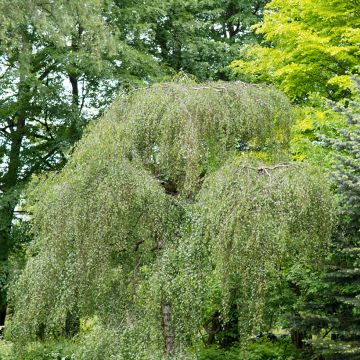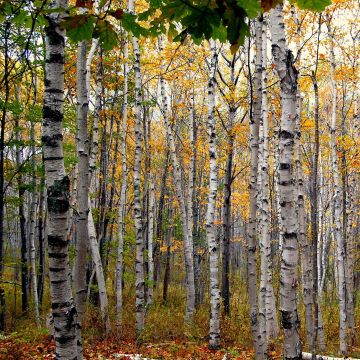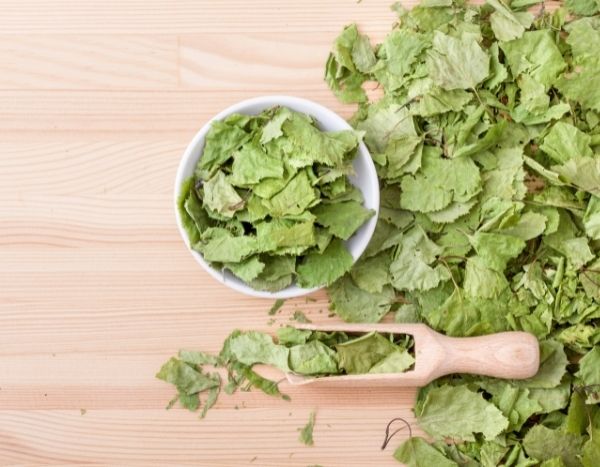

Betula ermanii Mount Zao Purple - Erman's Birch
Betula ermanii Mount Zao Purple - Erman's Birch
Betula ermanii Mount Zao Purple
Erman's Birch, Gold Birch
Special offer!
Receive a €20 voucher for any order over €90 (excluding delivery costs, credit notes, and plastic-free options)!
1- Add your favorite plants to your cart.
2- Once you have reached €90, confirm your order (you can even choose the delivery date!).
3- As soon as your order is shipped, you will receive an email containing your voucher code, valid for 3 months (90 days).
Your voucher is unique and can only be used once, for any order with a minimum value of €20, excluding delivery costs.
Can be combined with other current offers, non-divisible and non-refundable.
Why not try an alternative variety in stock?
View all →This plant carries a 24 months recovery warranty
More information
We guarantee the quality of our plants for a full growing cycle, and will replace at our expense any plant that fails to recover under normal climatic and planting conditions.
Would this plant suit my garden?
Set up your Plantfit profile →
Description
Betula ermanii 'Mount Zao Purple' is a very rare Japanese variety, sought after for its original purple-chocolate bark, covered with cream-orange stripes that exfoliate and widely striped with prominent horizontal cream lenticels! It forms a medium-sized deciduous tree with a slender, upright, branching silhouette often from the base, highlighting its highly marbled bark. The medium green deciduous foliage turns to rich orange tones in autumn before falling. This hardy tree grows in sunny well-drained soils but prefers moist soils. Plant it isolated on a lawn or in front of a large grove or curtain of dark or even bluish foliage trees to bring out the vibrant colours of its bark.
The Erman Birch, commonly known as the Erman Birch, is a deciduous tree native to mixed forests in Northeast Asia. The habit of this species, which reaches up to 25 m in height in its natural habitat, is columnar to oval, rounding with age. The 'Mount Zao Purple' variety was obtained from seeds collected by Kenneth Ashburner on Mount Zao, north of Honshu, Japan.
In our climate, the Erman Birch 'Mount Zao Purple' will reach approximately 15 m high and spread over 10 m after many years. In 20 years, it will only reach about 8 m high and 4 m wide. Its semi-open crown consists of loose branches covered with purple bark with chocolate tones. Its rather upright and oval shape is spreading and rounding with age. The bark is horizontally streaked with long cream lenticel bands and exfoliates in long orange cream flakes. Its ovate to triangular, 4 to 10 cm long, slightly toothed leaves are medium green. They bud early in spring and turn to deep orange early in autumn. The male and female inflorescences appear at the same time as the leaves in the form of pendulous yellow-green catkins. The flowers are very nectar-rich. The root system of this tree is quite shallow, dense, and composed of secondary roots bearing numerous rootlets. It is better to keep this beautiful birch away from the house, as strong winds could potentially uproot it, especially when it is in full leaf and the soil is very moist.
Betula ermanii 'Mount Zao Purple' is a very tolerant species in terms of soil, as long as it is not too dry. It does not tolerate coastal winds well. Its main attraction is its bark, but its moderate growth and slow growth are real assets for medium-sized gardens. However, it will stand out particularly well in winter! It can be highlighted isolated in the middle of a lawn, where one can enjoy its light shade. The Erman Birch also lends itself to superb winter compositions with other remarkable plants in winter, such as multicoloured bark Cornus or fragrant winter-flowering Hamamelis. It also allows provides contrasting colour combinations, for example when paired with black Ophiopogon, certain purple Hellebores, or the foliage of 'Black Lace' Elderberry in summer. Its autumn foliage will blend well with Nyssa sylvatica in acidic and moist soil, with deciduous Viburnums (Viburnum lantana, V. opulus, and their cultivars...) or Parrotia persica in drier, slightly chalky soil. It should be given a sunny location or partial shade to allow for easier growth.
Plant habit
Flowering
Foliage
Safety measures
Botanical data
Betula
ermanii
Mount Zao Purple
Betulaceae
Erman's Birch, Gold Birch
Cultivar or hybrid
atteinterespiratoire
Cette plante peut entraîner des symptômes allergiques.
Evitez de la planter si vous ou vos proches souffrez de rhinite saisonnière ("rhume des foins").
Davantage d'informations sur https://plantes-risque.info
Other Betula - Birch tree
View all →Planting and care
Easy to grow in not too dry soil, even poor, slightly chalky or even clayey, the Erman's birch requires little maintenance, except for regular watering in case of prolonged drought. It is better planted in moist, humus-rich, fertile, not waterlogged soil to obtain beautiful foliage colourations, but it will also thrive in neutral to slightly chalky soil, in full sun or, at a pinch, in partial shade. Pruning is not necessary, and the plant is not very susceptible to diseases or parasites.
Planting period
Intended location
Care
Planting & care advice
This item has not been reviewed yet - be the first to leave a review about it.
Haven't found what you were looking for?
Hardiness is the lowest winter temperature a plant can endure without suffering serious damage or even dying. However, hardiness is affected by location (a sheltered area, such as a patio), protection (winter cover) and soil type (hardiness is improved by well-drained soil).

Photo Sharing Terms & Conditions
In order to encourage gardeners to interact and share their experiences, Promesse de fleurs offers various media enabling content to be uploaded onto its Site - in particular via the ‘Photo sharing’ module.
The User agrees to refrain from:
- Posting any content that is illegal, prejudicial, insulting, racist, inciteful to hatred, revisionist, contrary to public decency, that infringes on privacy or on the privacy rights of third parties, in particular the publicity rights of persons and goods, intellectual property rights, or the right to privacy.
- Submitting content on behalf of a third party;
- Impersonate the identity of a third party and/or publish any personal information about a third party;
In general, the User undertakes to refrain from any unethical behaviour.
All Content (in particular text, comments, files, images, photos, videos, creative works, etc.), which may be subject to property or intellectual property rights, image or other private rights, shall remain the property of the User, subject to the limited rights granted by the terms of the licence granted by Promesse de fleurs as stated below. Users are at liberty to publish or not to publish such Content on the Site, notably via the ‘Photo Sharing’ facility, and accept that this Content shall be made public and freely accessible, notably on the Internet.
Users further acknowledge, undertake to have ,and guarantee that they hold all necessary rights and permissions to publish such material on the Site, in particular with regard to the legislation in force pertaining to any privacy, property, intellectual property, image, or contractual rights, or rights of any other nature. By publishing such Content on the Site, Users acknowledge accepting full liability as publishers of the Content within the meaning of the law, and grant Promesse de fleurs, free of charge, an inclusive, worldwide licence for the said Content for the entire duration of its publication, including all reproduction, representation, up/downloading, displaying, performing, transmission, and storage rights.
Users also grant permission for their name to be linked to the Content and accept that this link may not always be made available.
By engaging in posting material, Users consent to their Content becoming automatically accessible on the Internet, in particular on other sites and/or blogs and/or web pages of the Promesse de fleurs site, including in particular social pages and the Promesse de fleurs catalogue.
Users may secure the removal of entrusted content free of charge by issuing a simple request via our contact form.
The flowering period indicated on our website applies to countries and regions located in USDA zone 8 (France, the United Kingdom, Ireland, the Netherlands, etc.)
It will vary according to where you live:
- In zones 9 to 10 (Italy, Spain, Greece, etc.), flowering will occur about 2 to 4 weeks earlier.
- In zones 6 to 7 (Germany, Poland, Slovenia, and lower mountainous regions), flowering will be delayed by 2 to 3 weeks.
- In zone 5 (Central Europe, Scandinavia), blooming will be delayed by 3 to 5 weeks.
In temperate climates, pruning of spring-flowering shrubs (forsythia, spireas, etc.) should be done just after flowering.
Pruning of summer-flowering shrubs (Indian Lilac, Perovskia, etc.) can be done in winter or spring.
In cold regions as well as with frost-sensitive plants, avoid pruning too early when severe frosts may still occur.
The planting period indicated on our website applies to countries and regions located in USDA zone 8 (France, United Kingdom, Ireland, Netherlands).
It will vary according to where you live:
- In Mediterranean zones (Marseille, Madrid, Milan, etc.), autumn and winter are the best planting periods.
- In continental zones (Strasbourg, Munich, Vienna, etc.), delay planting by 2 to 3 weeks in spring and bring it forward by 2 to 4 weeks in autumn.
- In mountainous regions (the Alps, Pyrenees, Carpathians, etc.), it is best to plant in late spring (May-June) or late summer (August-September).
The harvesting period indicated on our website applies to countries and regions in USDA zone 8 (France, England, Ireland, the Netherlands).
In colder areas (Scandinavia, Poland, Austria...) fruit and vegetable harvests are likely to be delayed by 3-4 weeks.
In warmer areas (Italy, Spain, Greece, etc.), harvesting will probably take place earlier, depending on weather conditions.
The sowing periods indicated on our website apply to countries and regions within USDA Zone 8 (France, UK, Ireland, Netherlands).
In colder areas (Scandinavia, Poland, Austria...), delay any outdoor sowing by 3-4 weeks, or sow under glass.
In warmer climes (Italy, Spain, Greece, etc.), bring outdoor sowing forward by a few weeks.






















































